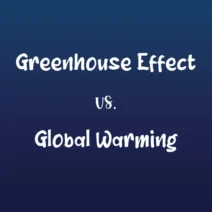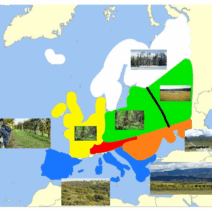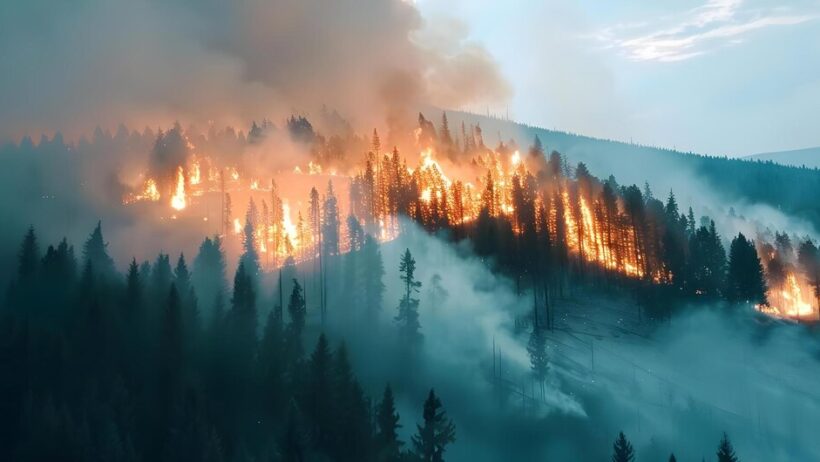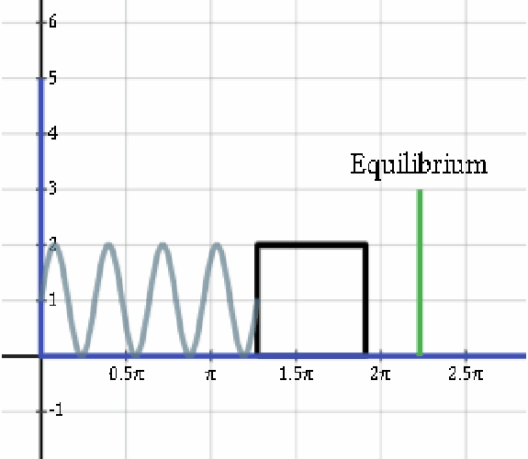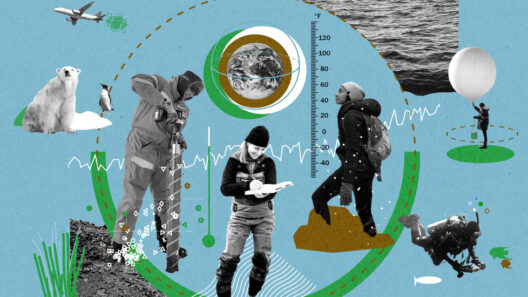Deforestation’s Devastation: How Global Warming is Fueled by Forest Loss
In the heart of our planet, forests act as the lungs of the Earth. They not only provide oxygen but also play a crucial role in sequestering carbon dioxide, the primary greenhouse gas responsible for global warming. However, the rampant deforestation that graces many parts of the world has alarmingly disrupted this intricate ecosystem. To understand the full implications, one must delve into the interconnectedness of deforestation and climate change.
Deforestation, the large-scale removal of trees from forests, has reached staggering levels in the 21st century. It is estimated that around 10 million hectares of forest are lost each year due to agricultural expansion, logging, and urban development. When trees are felled, not only is their ability to absorb carbon dioxide lost, but the carbon stored within their trunks is released back into the atmosphere. This creates a vicious cycle where increased carbon emissions cause temperatures to rise, subsequently leading to adverse climatic conditions.
Let us consider the carbon cycle. Trees play a pivotal role in sequestering carbon dioxide; they absorb this greenhouse gas and store carbon in their biomass. The process of photosynthesis transforms atmospheric carbon into organic matter. When trees are removed, this cycle is disrupted. The release of carbon stored in trees, combined with the ongoing emissions from fossil fuels, exacerbates the greenhouse effect, leading to higher average global temperatures. This chain reaction is not merely an environmental concern; it poses profound hazards to human health, economies, and biodiversity.
Moreover, deforestation contributes to the phenomenon referred to as the “positive feedback loop.” As forests vanish, not only does carbon accumulate in the atmosphere, but local climates begin to alter as well. Forested areas maintain moisture levels and regulate temperatures. Their absence leads to the desiccation of regions, resulting in droughts and heatwaves, which further fuel climate change. The loss of biodiversity due to habitat destruction only aggravates this calamity, as diverse ecosystems tend to be more resilient to climatic shifts.
Interestingly, the types of deforestation are diverse, each with its implications. There is the clear-cutting of trees, often seen in timber production; selective logging, where only specific trees are removed; and fragmentary deforestation, which leaves patches of forest behind. Each of these methods disrupts local ecosystems and can lead to different rates of carbon release. Urbanization and the conversion of forested land for agricultural purposes are two of the most significant contributors to the loss of trees. With a rising global population, agricultural expansion has become a priority, often at the expense of forested lands.
Attempting to combat this devastating trend, reforestation and afforestation initiatives have gained momentum in recent years. Reforestation involves replanting trees in areas where forests have been depleted, while afforestation seeks to create new forests in previously non-forested areas. Both approaches target restoration of ecosystems and mitigating climate change effects. However, they should not be viewed as substitutes for preventing deforestation—rather, they should complement ongoing conservation efforts. Protecting existing forests is paramount, as older forests often store considerably more carbon than newly planted trees.
Policy approaches are crucial in addressing deforestation. Governments worldwide need to embrace sustainable land use policies. Implementing protective biodiversity legislation can effectively mitigate the loss of our forests. Moreover, global cooperation is necessary as deforestation does not obey national borders. The Paris Agreement, although traditionally focused on greenhouse gas emissions, must encompass deforestation as a critical element in the fight against climate change. The notion that tropical forests, dubbed the “Earth’s lungs,” play a pivotal role in global carbon cycles cannot be overstated.
Furthermore, the role of technology in monitoring forests cannot be overlooked. Satellite imagery, drones, and data analytics have empowered environmentalists and policymakers to track deforestation in real-time. This technological advancement enables us to impose accountability on corporations that engage in unsustainable practices. Transparency is essential to build a sustainable future.
Finally, we as consumers wield remarkable power. Our choices dictate market demands. By supporting sustainable products, we can reduce the pressure on forests. Additionally, public awareness campaigns can enlighten communities about the importance of forests, fostering a collective sense of responsibility. Through education, societies can pivot towards environmentally-friendly practices, integrating conservation into daily life.
As we navigate this looming crisis, let us ponder the gravity of our choices. The relationship between deforestation and global warming is reciprocal and rife with consequences. While the quandary is substantial, tangible solutions exist. Through a unified approach—encompassing policy change, technological innovation, public awareness, and sustainable practices—we can forge a path towards a more stable climate. Understanding the imperative nature of forests in combating climate change is pivotal. In the words of many environmental advocates, the question is not whether we can afford to invest in preserving our forests; it’s whether we can afford not to.
In conclusion, the looming challenge of climate change demands a multifaceted response, one that understands deforestation’s impact and recognizes the need for urgent action. As the global temperature continues to rise, the urgency for tackling deforestation grows more profound. Our forests are more than mere resources; they are essential allies in the battle against global warming. Let us embrace this knowledge and take action before it’s too late.
